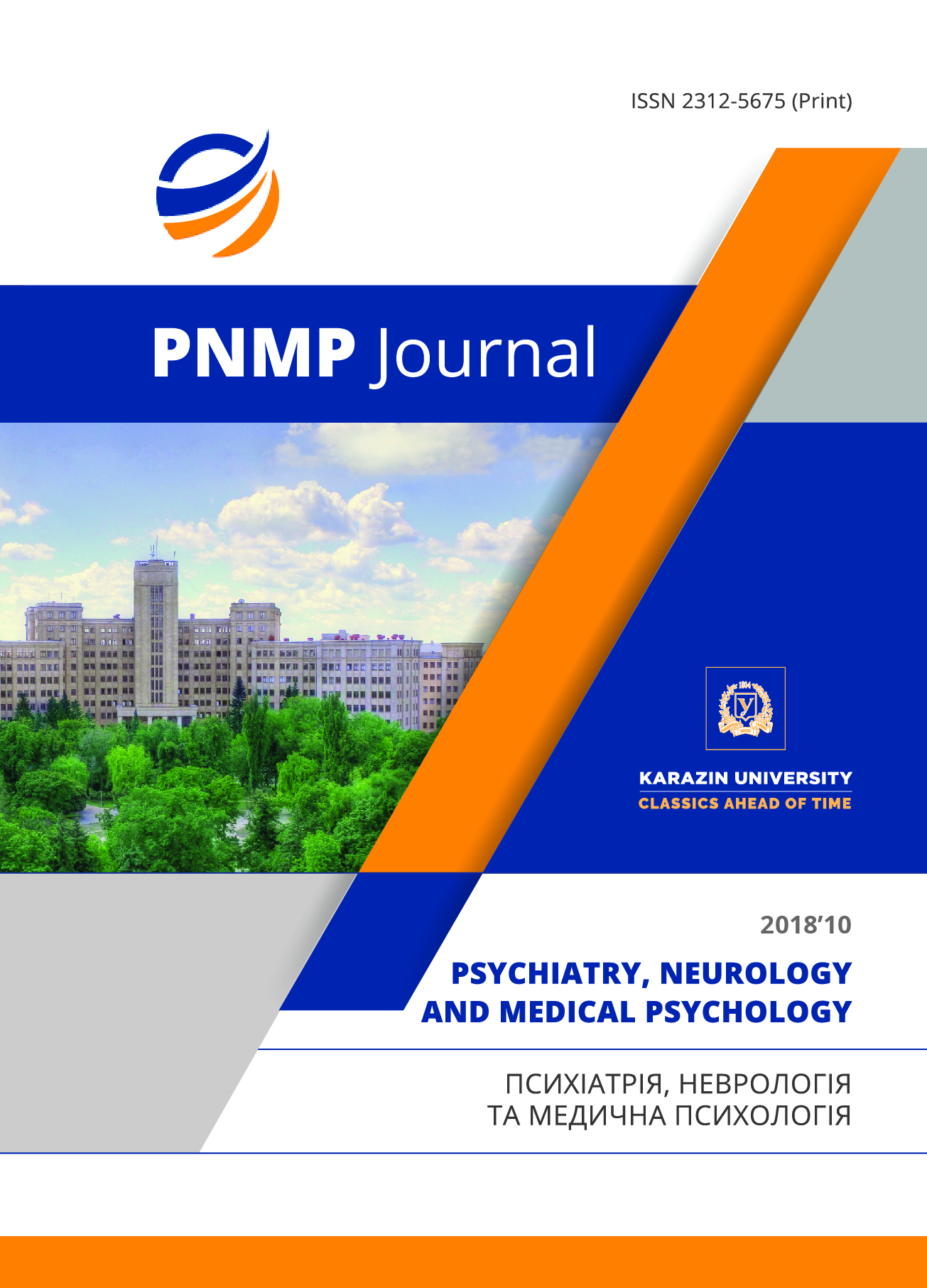Clinical-psychopathological and dynamic features of socially-disadaptative post-combat syndrome in the military personnel of Ukraine in modern realities
Abstract
The aim of the study was to establish the clinical features of the Socially-Disadaptative Post-Combat syndrome as one of the psychopathological states associated with participation in hostilities. To achieve this aim, 482 Ukrainian military personnel who took part in the anti-terrorist operation / Joint Force Operation and requested psychiatric assistance had examined. As part of the study, clinical, anamnestic, psychopathological, psychodiagnostic, follow-up, statistical research methods had used. In the course of the study, it was found that 15% of servicemen combined the presence of a certain group of symptoms, which, due to their clinical-psychopathological continuum, etiology and dynamics features, became possible to combine into a single syndrome, called the “Socially-Disadaptative Post-Combat syndrome”. With this syndrome, the explosiveness, the lability of emotions and moods, dysphorism, emotional stress, conflict, non-conformal, egocentrism, an increased sense of justice, which arose some time after the return of the combatant from the combat zone, prevail. The study found that the debut of this syndrome could be attributed to the group of delayed stress response disorders, but this does not allow the following fact: the main etiological factor of the pathological condition is maladjustment in the social environment, which is caused by alienation and disharmonious perception of civilian life and its associated information space of a person who is faced with the realities of the combat situation and has developed adaptation mechanisms to it. Another etiological component of this syndrome is the emotional stress that has remained after being in a combat zone, which affects the perception of the environment. Not the last etiological component of the Socially-Disadaptative Post-Combat syndrome is the informational component of the “hybrid war” and its consequences, reflected in the verbal and behavioral practices of the civilian population. The elimination of the Socially-Disadaptative Post-Combat syndrome took place on its own immediately upon the return of servicemen to the combat zone or, in the case of a long period of stay of servicemen in a civilian environment, extremely slowly and in the conditions of treatment. The identification and establishment of the clinical features of the Socially-Disadaptative Post-Combat syndrome has expanded the understanding of the psychopathological states from the Combat stress reaction group; however, this psychopathological condition requires further analysis and research.
Downloads
References
Богомолець О. В. Поширеність та структура посттравматичних психічних порушень в учасників бойових дій / О. В. Богомолець / Національна програма охорони психічного здоров’я. Важливі кроки на шляху перетворення. – Київ, Нейроньюс, 2017. – С.105–112.
Михайлов Б. В. Медико-психологічна реабілітація учасників АТО в санаторно-курортній мереж (клінічна настанова). – Київ-Харків, 2015 – 72 с.
Shen Y. C. Time-varying associations of suicide with deployments, mental health conditions, and stressful life events among current and former US military personnel: a retrospective multivariate analysis / Y. C. Shen, J. M. Cunha, T. V. Williams // Lancet Psychiatry. – 2016. – №3(11).– Р.1039-1048.
Trautmann S. Prevalence and severity of mental disorders in military personnel: a standardised comparison with civilians / S. Trautmann, L. Goodwin, M. Höfler, F. Jacobi, J. Strehle, P. Zimmermann, H. U. Wittchen // Epidemiol. Psychiatr. Sci. – 2017. – №26(2). – Р.199–208.
Andreasen N. C. Posttraumatic stress disorder: a history and a critique // Annals of the New York Academy of Sciences. – 2010. – №1208. – Р. 67–71.
Andreasen N. C. Brave New Brain: Conquering Mental Illness in the Era of the Genome. New York: Oxford University Press. 2004. – 386 p.
Combat and Operational Stress Control Manual for Leaders and Soldiers. Field Manual No. 6-22.5. Headquarters, Department of the Army, Washington, DC, 2009. – 100 p.
Горбулін В. «Гібридна війна» як ключовий інструмент російської геостратегії реваншу / В. Горбулін // Дзеркало тижня – Україна. – 2015. – №2. – С. 3.
Марута Н. О. Інформаційно-психологічна війна як новий виклик сучасності: стан проблеми та напрямки її подолання / Н. О. Марута, М. В. Маркова // Український вісник психоневрології. – 2015. – Т. 23, вип. 3. – С. 21–28.
Данілевська Н. В. Сучасні особливості посттравматичного стресового розладу у військовослужбовців ЗСУ / Н. В. Данілевська // Медицинская психология. – 2018. – №3 – С. 64–66.
Матяш М. М. Український синдром: особливості посттравматичного стресового розладу в учасників антитерористичної операції / М. М. Матяш, Л. І. Худенко // Український медичний часопис. – 2014 . – № 6 (104). – С. 124–127.
Стаднік І. В. Психологічні особливості переживання посттравматичного стресового розладу (ПТСР) учасниками зони антитерористичної операції (АТО) / І. В. Стаднік, М. І. Мушкевич // Збірник наукових праць РДГУ. – 2015. – Вип. 4. – С. 244–248.

